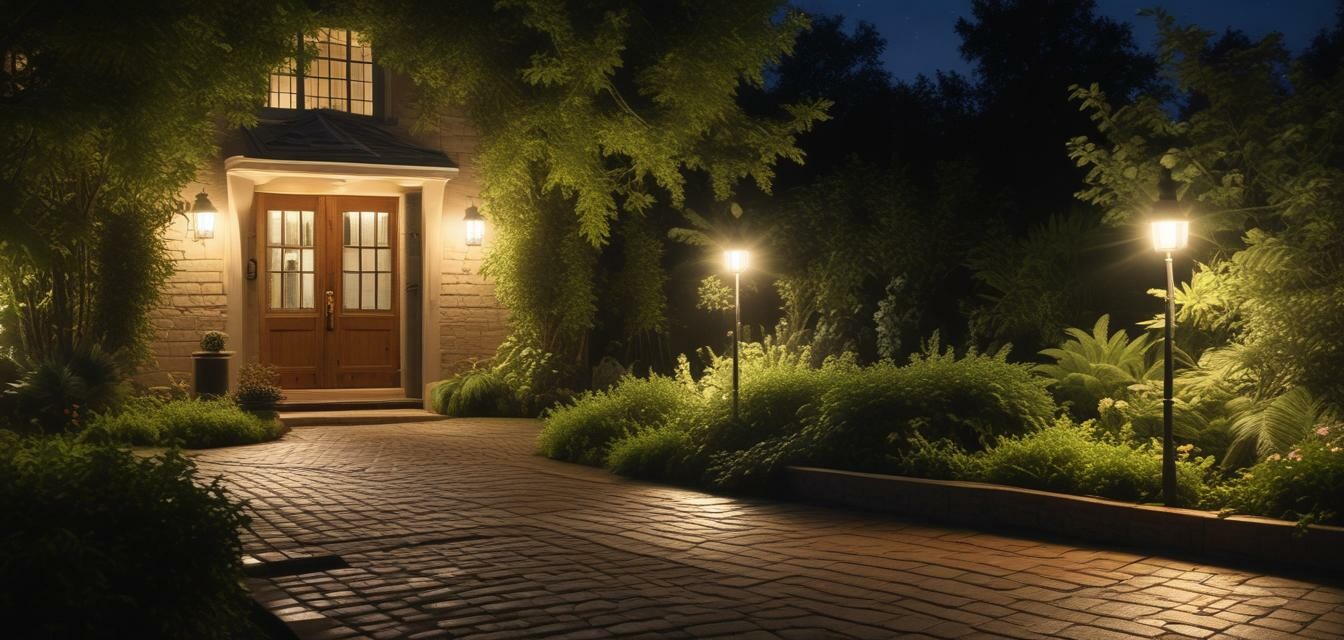
Choosing the right lighting for outdoor spaces
Key Takeaways
- Consider safety, aesthetics, and energy efficiency when selecting outdoor lighting.
- Different types of outdoor lights serve various purposes and enhance security.
- LED options offer excellent energy efficiency and long life.
- Color temperature affects the mood and appearance of outdoor spaces.
- Layered lighting creates depth and highlights features in the landscape.
Lighting is an essential element that can transform outdoor spaces into visually appealing and functional environments. Whether you want to illuminate your garden, driveway, or patio, selecting the right lighting can make all the difference. In this guide, we will explore the different types of outdoor lighting, important factors to consider, and how to choose the best options for your specific needs.
Factors to consider when choosing outdoor lighting
| Factor | Considerations |
|---|---|
| Safety | Ensure pathways, steps, and entryways are well-lit to prevent accidents. |
| Aesthetics | Select lights that complement your home’s architecture and landscape design. |
| Energy efficiency | Opt for energy-saving bulbs such as LED or solar-powered options. |
| Functionality | Consider how you will use the space and choose lighting accordingly (e.g. task lighting, ambient lighting). |
Types of outdoor lighting
- Pathway lighting: Guides visitors and enhances safety along walkways.
- Wall mounted lights: Great for illuminating walls, entrances, or as accent lighting.
- Spotlights: Focus on specific areas, such as trees, statues, or gardens.
- Flood lights: Provide wide-area illumination for security purposes.
- String lights: Create a warm and inviting atmosphere, perfect for gatherings.
- Post lights: Style your driveway or garden with elegant fixtures.
Pathway lighting options
| Type of Path Light | Description | Best For |
|---|---|---|
| Solar-powered path lights | Cost-effective and easy to install; no wiring needed. | Low-traffic areas and eco-friendly initiatives. |
| Low voltage path lights | Require a transformer but offer brighter options. | High-traffic areas needing reliable lighting. |
| Line voltage path lights | Best for professional installations, offering versatility. | Permanent installations with a variety of styles. |
Understanding color temperature
Color temperature, measured in Kelvins (K), plays a vital role in determining the ambiance of your outdoor space. Here’s a brief overview:
- Warm white (2700K - 3000K): Creates a cozy and inviting atmosphere.
- Neutral white (3500K - 4100K): Slightly brighter and more balanced, suitable for functional areas.
- Cool white (5000K - 6500K): Ideal for security purposes, providing a bright and alert environment.
Creating layered lighting
A well-balanced outdoor lighting design incorporates multiple layers to enhance functionality and beauty. Here are the common layers:
- Ambient lighting: Overall illumination creating a comfortable atmosphere.
- Task lighting: Focused lighting designed for specific activities, such as cooking or reading.
- Accent lighting: Highlights specific features, like trees, fountains, or architectural details.
Installation and maintenance tips
Beginner’s Tips for Outdoor Lighting
- Begin by outlining the areas you want to illuminate.
- Use motion sensors for security lights to save energy.
- Regularly check fixtures for maintenance to ensure longevity.
- Create a lighting plan that considers the use of your outdoor space.
In conclusion, selecting the right outdoor lighting enhances safety, functionality, and aesthetics. By considering the various types of lighting, color temperature, and incorporating layered lighting, you can create a beautiful outdoor environment. For more insights on outdoor solutions, check our other guides such as industrial lighting solutions and audio/video cable accessories to ensure your space is equipped perfectly.
Pros
- Enhances the beauty and curb appeal of your home.
- Improves safety at night, decreasing the risk of accidents.
- Offers energy-efficient options to save money on electricity.
- Provides versatility with various styles and types available.
Cons
- Initial installation costs can be high.
- Regular maintenance is necessary to ensure optimal performance.
- Some lights may attract unwanted insects.
- Over-illumination can create a harsh environment.